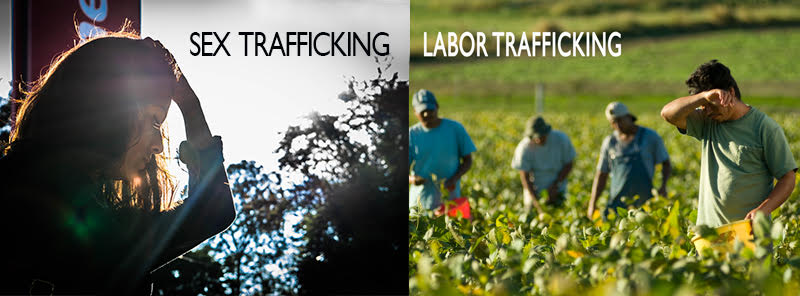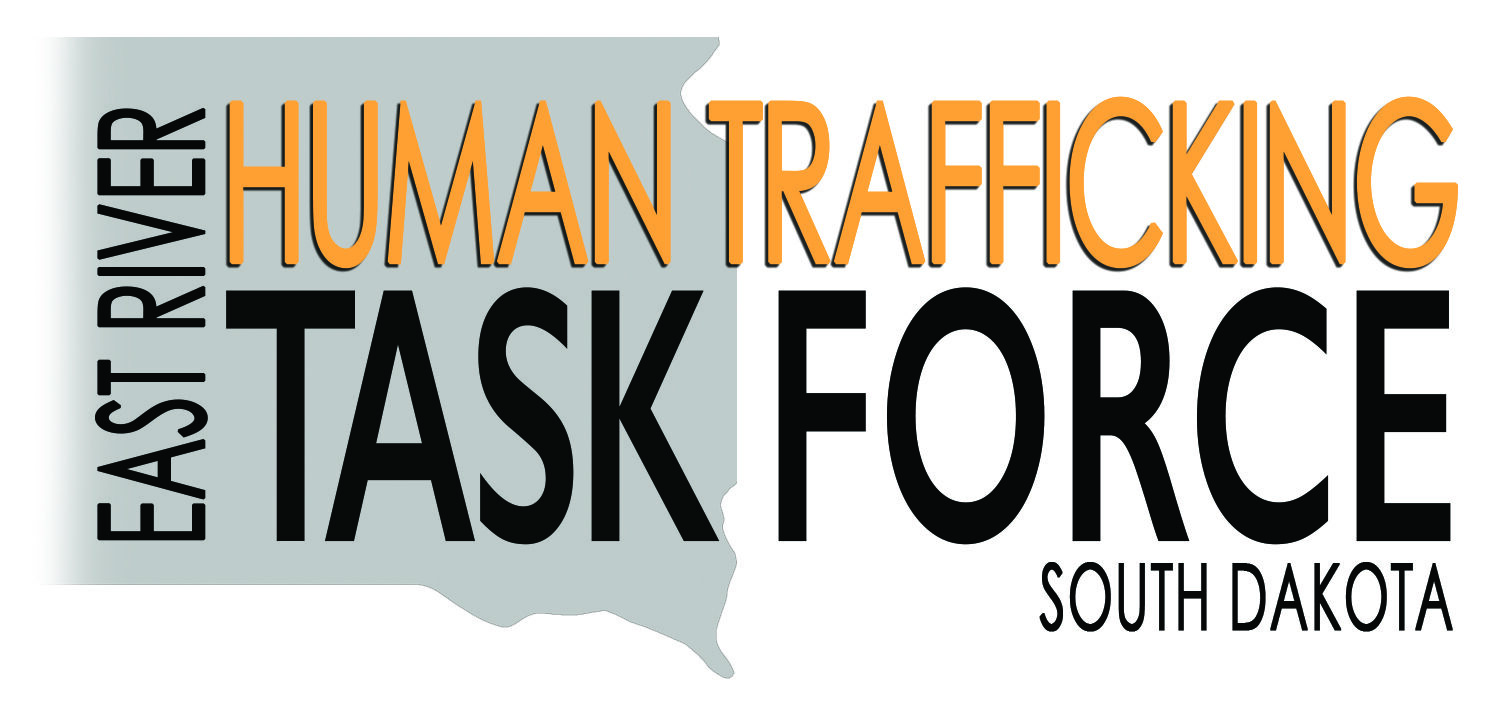
* SOURCE – National Human Trafficking Hotline
What human trafficking is, and isn’t
Human trafficking is the business of stealing freedom for profit. In some cases, traffickers trick, defraud or physically force victims into providing commercial sex. In others, victims are lied to, assaulted, threatened or manipulated into working under inhumane, illegal or otherwise unacceptable conditions. It is a multi-billion dollar criminal industry that denies freedom to 24.9 million people around the world. Please scroll down to learn more about what constitutes the crime of trafficking. We hope this information is useful to you. Please note that the staff of the National Hotline is focused on assisting victims and survivors and is not available to answer more general questions about their work or about human trafficking generally for research or other purposes.
Force, fraud, or coercion
U.S. law defines human trafficking as the use of force, fraud, or coercion to compel a person into commercial sex acts or labor or services against his or her will. The one exception involves minors and commercial sex. Inducing a minor into commercial sex is considered human trafficking regardless of the presence of force, fraud or coercion.
Who is vulnerable?
Human trafficking can happen to anyone but some people are more vulnerable than others. Significant risk factors include recent migration or relocation, substance use, mental health concerns, involvement with the children welfare system and being a runaway or homeless youth. Often, traffickers identify and leverage their victims’ vulnerabilities in order to create dependency.
Who are the traffickers?
Perpetrators of human trafficking span all racial, ethnic, and gender demographics and are as diverse as survivors. Some use their privilege, wealth, and power as a means of control while others experience the same socio-economic oppression as their victims. They include individuals, business owners, members of a gang or network, parents or family members of victims, intimate partners, owners of farms or restaurants, and powerful corporate executives and government representatives.
How do traffickers control victims?
Traffickers employ a variety of control tactics, the most common include physical and emotional abuse and threats, isolation from friends and family, and economic abuse. They make promises aimed at addressing the needs of their target in order to impose control. As a result, victims become trapped and fear leaving for myriad reasons, including psychological trauma, shame, emotional attachment, or physical threats to themselves or their family.
South Dakota Statistics
- Trafficking related calls since 2007 – 636 calls
- In 2018 SD was reported 11th in the US for number of active criminal human trafficking cases moving through federal courts
- 8 life sentences YTD – most of any other state
- Total of 80 federal cases in SD
- In 2019, 11 people were arrested in Sturgis Rally sting operation, all SD residents
- In 2020, 8 people arrested, 6 SD resident
- * (Source) Polaris – https://atg.sd.gov/
Recruitment Methods
Violence or threats against their lives and/or loved ones’ lives
False job advertisements
Manipulative/coercive relationships
False promises
Familial trafficking
Debt bondage
Promise of better life in another country
Social media
Blackmail
Businesses or Services that Traffickers Commonly Utilize to Traffic Individuals
Advertising (Online and Print)
Airlines, bus, rail, and taxi companies
Financial institutions, money transfer services, and informal cash transfer services
Hospitality industry, including hotels and motels
Labor brokers, recruitment agencies, or independent recruiters
Landlords
Travel and visa/passport services
Examples of Traffickers
Brothels and fake massage business owners and managers
Parents and relatives of victims
Spouses or partners of victims
Employers of domestic servants
Bar/lounge owners and managers
Gangs and criminal networks
Growers and crew leaders in agriculture
Labor brokers
Factory owners and corporations
Hospitality industry owners and managers
Pornography industry recruiters and managers
Small business owners and managers
Myth: It’s always or usually a violent crime
Reality: By far the most pervasive myth about human trafficking is that it always – or often – involves kidnapping or otherwise physically forcing someone into a situation. In reality, most human traffickers use psychological means such as tricking, defrauding, manipulating or threatening victims into providing commercial sex or exploitative labor.
Myth: All human trafficking involves commercial sex
Reality: Human trafficking is the use of force, fraud or coercion to get another person to provide labor or commercial sex. Worldwide, experts believe there are more situations of labor trafficking than of sex trafficking. However, there is much wider awareness of sex trafficking in the United States than of labor trafficking.
Myth: Only undocumented foreign nationals get trafficked in the United States
Reality: Polaris has worked on thousands of cases of trafficking involving foreign national survivors who are legally living and/or working in the United States. These include survivors of both sex and labor trafficking.
Myth: Human trafficking only happens in illegal or underground industries
Reality: Human trafficking cases have been reported and prosecuted in industries including restaurants, cleaning services, construction, factories and more.
Myth: Only women and girls can be victims and survivors of sex trafficking
Reality: One study estimates that as many as half of sex trafficking victims and survivors are male. Advocates believe that percentage may be even higher but that male victims are far less likely to be identified. LGBTQ boys and young men are seen as particularly vulnerable to trafficking.
Myth: Human trafficking involves moving, traveling or transporting a person across state or national borders
Reality: Human trafficking is often confused with human smuggling, which involves illegal border crossings. In fact, the crime of human trafficking does not require any movement whatsoever. Survivors can be recruited and trafficked in their own home towns, even their own homes.
Myth: All commercial sex is human trafficking
Reality: All commercial sex involving a minor is legally considered human trafficking. Commercial sex involving an adult is human trafficking if the person providing commercial sex is doing so against his or her will as a result of force, fraud or coercion.
Myth: If the trafficked person consented to be in their initial situation, then it cannot be human trafficking or against their will because they “knew better”
- Reality: Initial consent to commercial sex or a labor setting prior to acts of force, fraud, or coercion (or if the victim is a minor in a sex trafficking situation) is not relevant to the crime, nor is payment.
Myth: People being trafficked are physically unable to leave their situations/locked in/held against their will
Reality: That is sometimes the case. More often, however, people in trafficking situations stay for reasons that are more complicated. Some lack the basic necessities to physically get out – such as transportation or a safe place to live. Some are afraid for their safety. Some have been so effectively manipulated that they do not identify at that point as being under the control of another person.
Myth: Labor trafficking is only or primarily a problem in developing countries
Reality: Labor trafficking occurs in the United States and in other developed countries but is reported at lower rates than sex trafficking.
Myth: Traffickers target victims they don’t know
Reality: Many survivors have been trafficked by romantic partners, including spouses, and by family members, including parents.
